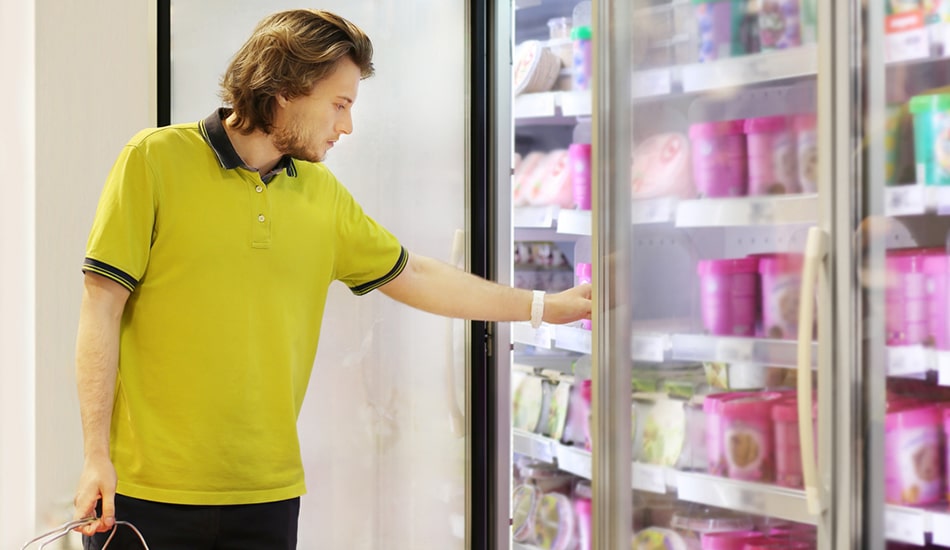Mike Johnson, Senior Customer Program Manager (UK)
Mark Thomas, Director of Operational Excellence (UK)
After the ups and downs of 2020 and all that COVID-19 brought our way, it was reasonable to think that the only way was up.
Unfortunately, despite some degree of optimism around how the economy started to bounce back from lows that had not been seen since the great depression, it was going to be a more challenging road ahead than any of us would have hoped for.
As the economy started to rebound and the UK took strides out of lockdown, we were greeted with news of a driver shortage for our vital HGV network. Was this a result of Brexit, low pay, poor conditions, or a desire for the next generation not to stay away from home for days? We will never know the actual cause of this. However, we can say that these were the early signs of a changing consumer landscape in 2022. We saw emergency policies passed that allowed skilled workers to come back to the UK and fast-tracked training and tests to enable new drivers to get behind the wheel of goods vehicles. HGV drivers pay was increased. Some reported having to pay twice their usual salary to attract drivers!
This was, of course, the tip of the iceberg, following a never seen before furlough support package, which changed the dynamic of the general workforce. More people than ever before tried working from home or had lost their jobs and, through support from the Government, were able to try something new. Many set up their own businesses, and some changed industries. Suddenly the combined impact of Brexit, changed working habits and new desires to spend more quality time with their family meant the workforce was pickier over the type of work they wanted to do, how often they wanted to commute to an office and the impact this had over their daily lives! With many people having more than one job and a record number of 50-60-year-olds choosing retirement, we had a sudden loss of experienced resources available. We headed straight into a recruitment crisis with the lowest sustained unemployment for over 40 years!
Despite the relatively buoyant employment market, we soon realised that our destiny was not entirely within our control.
With the conflict in Ukraine coming seemingly out of the blue, we were about to see an increase in basic living costs at a rate never seen before.
Between December 2021 and July 2022, the average cost of diesel and petrol increased by between 23-25%, driven by multiple factors. This, in turn, increased the costs of logistics and transportation. Compounding further the increase in HGV recruitment, we now see a significant increase in the cost of butter, eggs, bread, and other basic groceries. Thankfully, the market started to settle, and the price has receded slightly. However, as we write this article, we still have diesel prices 24% higher than they were a year ago and petrol prices 10% higher. Despite a 5p per litre drop in fuel duty this year. The cost-of-living crisis has hit everyone in every way. Whether you are a nurse, taxi driver or train driver or work from home in a clerical position, everyone is paying more for food, fuel, lighting or heating!
Many retailers have taken steps to bridge the gap over the past year; we have seen major retailers paying four pay increases to their front-line staff, totalling a whopping 15% increase! We have seen retailers investing in technology for self-service tills to ease the labour shortage and help to maintain control of costs.
What does all of this mean for the consumer?
A steady and sustained inflation increase since January has risen from 5.46% to 11.05% in October. This represents a 102% increase in just nine months! As we headed into December, it was reported that food inflation was at 12.4%! All of this has put a significant squeeze on people’s spare cash.
As consumers have to stop and think about how they spend their money, their voice is being heard louder than ever as we see a sustained migration to the discounter brands. Market share movement has accelerated over the year with a clear win for Aldi and Lidl against the Big 4. So much so that Aldi’s position is now clearly cemented in the midst of that Big 4 as Morrison’s drops.
Will this shift in customer preference continue? I see no reason, as there is no end to the cost-of-living crisis any time soon. We are not at the coldest months yet, and as we head toward January and February and people are left with no choice but to heat their homes on a more regular basis, we will, unfortunately, see the use of food banks and warm banks increase. All of this will lead to a significant shift in the winners for the Golden Quarter of retail. This is the period many make a profit after trading near or in a loss for some months of the year. With the consumers making difficult choices, it is likely that when the quarterly results are announced, there will be some surprises in the rankings and an undoubted shuffle at the top.
We are seeing the demand for home delivery services take a drop too, after an increase in this sector due to lockdowns and restrictions, combined with progress to our “new normal” and the cost-of-living increases. Understandably, the consumer is asking whether they need these items delivered or if they can save the few pounds delivery to use it more wisely. We have seen recent announcements in Australia that Deliveroo has pulled out of the country, leaving 15,000 riders without work may signal the start of a similar trend in the UK.
So, the big question is: What does 2023 have in store for us?
The balance for the retailers will be around either minimising profitable loss or maintaining profits to their current levels. There are several ways they can do this:
They can renegotiate with suppliers, potentially reducing the range and focusing on buying more of the same lines. They could also seek to team up with other retailers whom they are not in direct competition with to improve their buying power and negotiate a better rate per unit.
They can invest in technology. This could be in more self-service or walk-in, walk-out style stores. The year-one cost of this would soon be recouped as the cost of having a workforce continued to spiral. Technology can also be enhanced with better self-service tills, automatic ID checks, and centrally controlled self-serve banks could reduce the people to till bank ratio and saving 1-2 FTE per week in every site will make a significant impact on the bottom line just as we have seen a shift in work from home and the adoption of technology for office-based jobs. The evolution of retailers to find a solution and maintain profitability is likely to see another jump in the use of technology. It will lead to fewer people working in our retail stores.
In our experience, retailers who use an earned/actual hours approach based on operational requirements and volume throughput have the most accurate labour strategy. They are less reactive to potential external factors. This means that they avoid the distractions of inflation or deflation on productivity. Also, these retailers are more likely to use an effective budgeting/planning solution that allows the annual budget to undergo an iterative refresh every period, and this results in a best-in-class forecasting strategy which helps them navigate through the ups and downs that we will continue to experience during 2023.




